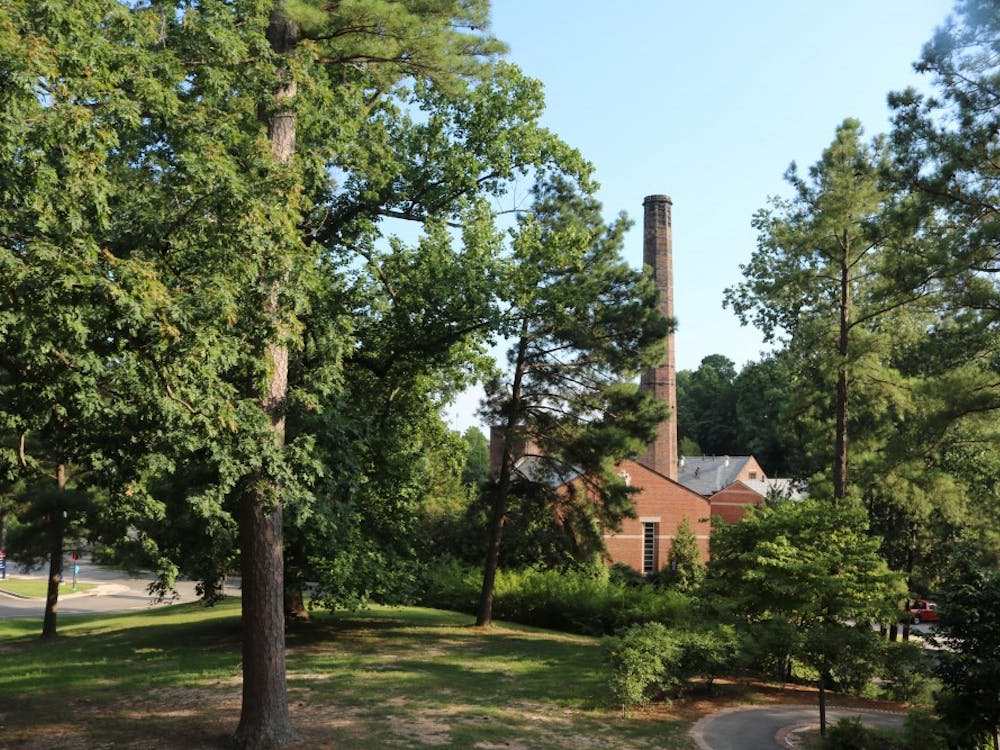A team of Richmond students sprints to the scene of an on-campus medical emergency and stays until an ambulance arrives as part of a typical day on the job.
"We're first-responders," senior Mike Olson said. "We get dispatched on a call by both URPD and by Richmond Ambulance Authority. We show up. We get there. And our priority is, we stabilize patients if they need to be stabilized. We take vitals. We get background on what's happening before the ambulance gets there."
Olson has been a member of the University of Richmond Emergency Medical Services (UREMS) since spring 2010. The organization is student-run and responds to medical emergencies in tandem with the University of Richmond Police.
UREMS does not have an ambulance, so first-responders have to transport themselves to the scene, Olson said. The first-responders have a Y-Lot pass when they are on duty, so if they have a car they have to try to keep it close to them at all times, he said.
"If I'm on duty, I'll drive to class, I'll drive to D-Hall, wherever," Olson said. "You can't go off-campus. If you don't have a car, it gets tricky. Some of the people I first-respond with, they don't have cars and they'll show up on a call, and they'll just be out of breath, panting, because they just ran across campus."
UREMS president, junior Laura Zemcik, said there had been about 13 first-responders in the organization this year who were cleared and responded to emergency calls. There were about 10 additional people who were in the training process and are soon to be cleared, she said.
Zemcik, a biology major who became an Emergency Medical Technician (EMT) in fall 2009, said, "In order to clear them after they've taken their EMT class, passed their test and are officially a certified EMT, we require them to do ride-alongs with Richmond Ambulance Authority in the city on ambulances with the highly-trained paramedics there."
Olson, who trained off campus at the Henrico Fire Training Center, said between 120 hours and 140 hours were required in the classroom for certification. Each hour of the training program is used to teach students specific skills, he said. Before attending the program, students need to have skills such as CPR, and then they learn skills from how to immobilize people to how to deliver a baby, he said. The final step was to take a certification test, he said.
The EMTs certified to work with UREMS are contacted for emergencies through pagers, text messages and radio communication, Olson said.
The patients to whom they respond can only be located on campus or at the houses on Bostwick Lane, he said.
"What their business is on campus, I don't know," he said. "A lot of them are students. Sometimes they're faculty, staff. Sometimes it could just be someone who walked onto campus for a walk and fell and called 911."
Olson said that if a first-responder was in class when he was dispatched, he immediately left to take the call. All professors are aware of the situation, and the first-responders have to wear their uniforms throughout their shift, he said. Each Richmond EMT works a shift every six days from 6 p.m. one night to 6 p.m. the following night, he said.
Enjoy what you're reading?
Signup for our newsletter
Olson, a geography major, said he did not want to pursue a medical profession.
"It's a good split," he said of the UREMS membership. "You have some people who want to be pre-med and some people who don't."
Olson said he had become an EMT because he had enjoyed volunteering in high school. He said he had wanted to learn skills that would be applicable throughout his life, and to actually feel he was helping people.
Olson has also volunteered each week in a 24-hour shift with the Tuckahoe Volunteer Rescue Squad since fall 2008.
Zemcik said she volunteered off campus as well, and was the only Richmond student riding with the West End Volunteer Rescue Squad in the city of Richmond.
Zemcik, who is not pre-med and is certified back home in New York, said she recommended off-campus EMT exposure. The calls bring a broader range of medical emergencies, and she has responded to the aftermath of shootings and a cardiac arrest from a drug overdose with the West End squad, she said.
The EMTs are never sent to a scene that has not been secured by police, but her co-workers were still good about teaching her to be street smart, Zemcik said.
"The types of calls we get on campus are not necessarily indicative of the types of things that go on around the rest of the city," she said. "Probably roughly half of our calls are alcohol calls."
All on-campus calls are real medical emergencies, but most patients on campus are otherwise healthy college students, she said.
"But I think with a lot more of the patients that I see, at least off campus, there's a lot more going on in their lives than just that quick call," Zemcik said. "You go into a house kind of at a vulnerable time for them, and you help them."
Senior Rob Scherer, a pre-med biology major who volunteers exclusively off campus, said he had gotten certified his sophomore year through the Tuckahoe program to get more medical experience with anatomy. The training program taught anatomy and how the body responded to emergency conditions, he said.
"You can feel for a pulse in three or four different places on the body, and I didn't know that going in," Scherer said.
He uses his certification not to work with UREMS, but to volunteer at home with a rescue squad in Maryland, he said, which was possible if his certificate was recent and if he stayed up-to-date on the Emergency Medical Services material.
Scherer chose not to volunteer in Richmond because he had played on the varsity soccer team since freshman year and had been busy with his pre-med concentration, he said.
The best answer to give when asked what kind of doctor he wanted to be was, "A good one," he said.
An EMT program is a good way to get to this point, he said.
"If you actually get involved, it exposes you to a lot of things you would see in the medical field," Scherer said. "It's a good way to figure out if this is what you really want to do."
Richmond's EMT program can be difficult to find out about, Scherer said.
"When I first came in it was kind of luck of the draw that I heard about it," he said. "And I actually saw it on a little flyer. Because they moved it off campus, everybody was very far away from it."
Olson said the program had recently returned to campus. The fall session takes place on campus and consists entirely of Richmond students, while the spring program is off campus and tends to consist of five or 10 Richmond students mixed with community members, he said.
Scherer said the return of the program to campus was a positive move.
"I think the recruiting process will be a lot easier," he said. "It will definitely be better for more people to go."
Contact staff writer Katie Toussaint at katie.toussaint@richmond.edu
Support independent student media
You can make a tax-deductible donation by clicking the button below, which takes you to our secure PayPal account. The page is set up to receive contributions in whatever amount you designate. We look forward to using the money we raise to further our mission of providing honest and accurate information to students, faculty, staff, alumni and others in the general public.
Donate Now


